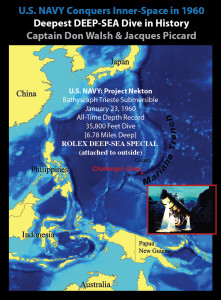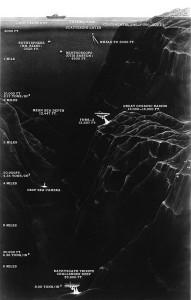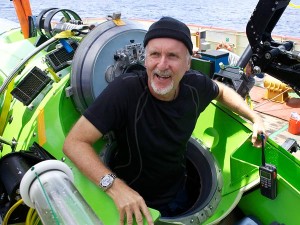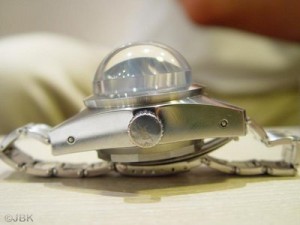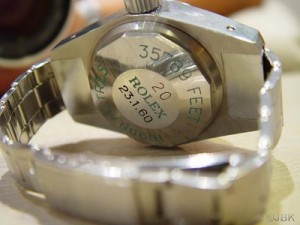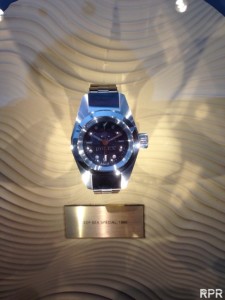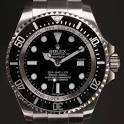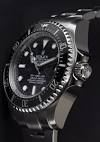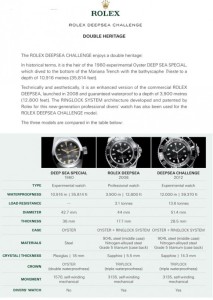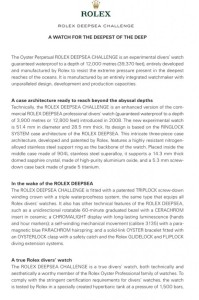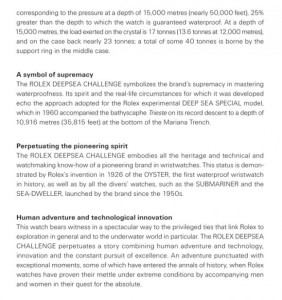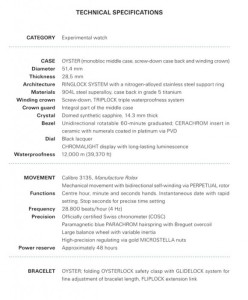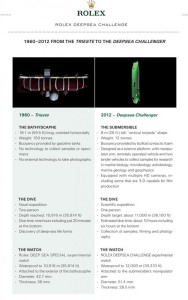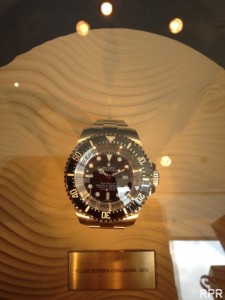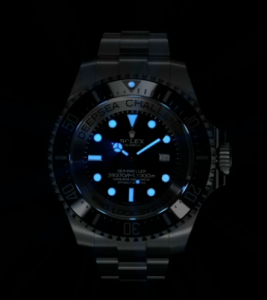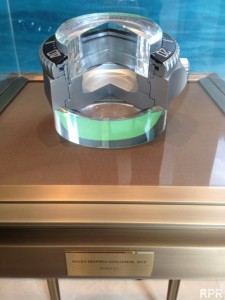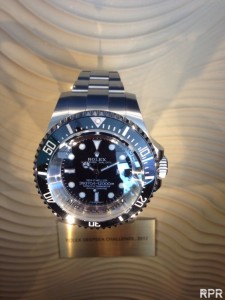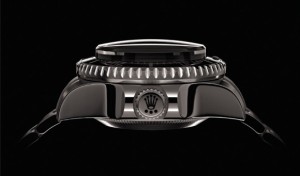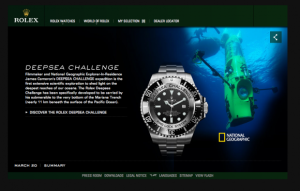James Cameron in the DEEPSEA CHALLENGE 2012
“I’ve always dreamed of diving to the deepest place in the oceans. For me it went from a boyhood fantasy to a real quest, like climbing Everest, as I learned more about deep-ocean exploration and became an explorer myself in real life. This quest was not driven by the need to set records, but by the same force that drives all science and exploration … curiosity.
So little is known about these deep places that I knew I would see things no human has ever seen. There is currently no submersible on Earth capable of diving to the ‘full ocean depth’ of 36,000 feet. The only way to make my dream a reality was to build a new vehicle unlike any in current existence. Our success during seven prior expeditions building and operating our own deep-ocean vehicles, cameras, and lighting systems gave me confidence that such a vehicle could be built, and not just with the vast resources of government programs, but also with a small entrepreneurial team.
It took more than seven years to design and build the vehicle, and it is still a work in progress. Every dive teaches us more, and we are continuing to improve the sub and its systems daily, as we move through our sea trials.” —James Cameron
On January 23rd 1960 Jacques Piccard and Lt. Don Walsh, a submarine commander in the US Navy, submerged with the vessel Trieste into the Mariana Trough near Guam. In the end they stayed for 20 minutes at a depth of 36,000 feet below sea level. During their decent they had heard cracking noises at a depth of 30,000 feet and when Piccard saw the cracks in the windows of the Trieste at the bottom of the trough he decided to return to the wild waves near Guam.
Director James Cameron has always been fascinated by life at the great depths of the world seas. He had already been aboard on several, mostly Russian MIG boats, submarines for 71 times before in 2002 he came up with the plan to submerge into the Mariana Trough. Simultaneously there are 3 other parties who are preparing for the same expedition. Among them a couple of familiar names, the founder of Google Eric Schmidt and Virgin boss Richard Branson.
In June 2011 a great honour befalls Cameron: the National Geographic Society adds him to the list of guest-researchers. Together with National Geographic and Rolex Cameron formulates the final plan to make the first manned dive into the Trough since 1960 and the first solo dive.
On the 23rd of June 2012 at 5.15 hour the Deepsea Challenger, Cameron’s submarine, slides into the salt water about 300 km southwest of Guam. After 2.36 hours Cameron is finally at the bottom of the Trough. He stays there for three hours to collect material and animals with the robot arm on his vessel and to make pictures and 3D movies. This is the big difference with the 1960 enterprise, Piccard and Walsh were at the bottom for only 20 minutes and didn’t do any research.
In 1960 Rolex had developed the Deep Sea Special especially for the dive of Piccard and Walsh. This watch was attached to the outside of the Trieste and withstood the enormous pressure at a depth of more than 10 km without a scratch.
In 2008 Rolex introduced an upgraded version of the famous Sea-Dweller, called the Sea-Dweller Deepsea. The former watch was water resistant to a depth of 1,220 m, the latter could even go to 3,900 m.
For the expedition of Cameron Rolex pushed the limits of the watch even further. They designed the Deepsea Challenge 2012, developed with the Sea-Dweller Deepsea as starting point. Technical aspects of the 2008 model, like the Ring Lock System, the Triplock crown and the case back in titanium, were also used on the new model.
The Deepsea Challenge was prepared to withstood the enormous pressure of the water at a gigantic depth of 12,000 km. To do this Rolex needed a pressure tank in which tests could be performed at a pressure of 1,500 bar. In cooperation with the French diving firm COMEX (Rolex made Submariners and Sea-Dwellers for this firm for years) they made the tank they needed. Under these circumstances the pressure on the watch glass is 17 tons, on the case back 23 tons and 40 tons on the middle part.
To be able to cope with these enormous pressures the case is even bigger and the sapphire glass even stronger. The diameter of the Deepsea Challenge is 51,4 mm and it’s height is 28,5 mm, 10,8 mm more than the not really slender Sea-Dweller Deepsea. The sapphire glass is 14,3 mm thick (compared to the serie model’s 5,5 mm).
When compared to the Deep Sea Special from 1960 it becomes clear how much progress Rolex has made with the 2012 model, especially in the use of materials. The latter model is 7,5 mm less thick than the watch from 1960.
In part caused by the movie on YouTube that shows the design and manufacturing of the Deepsea Challenge 2012 collectors started intense speculations if Rolex would ever bring the watch, limited or not, to the market. Unfortunately this never happened.
Jaap Bakker
Leave a Reply


